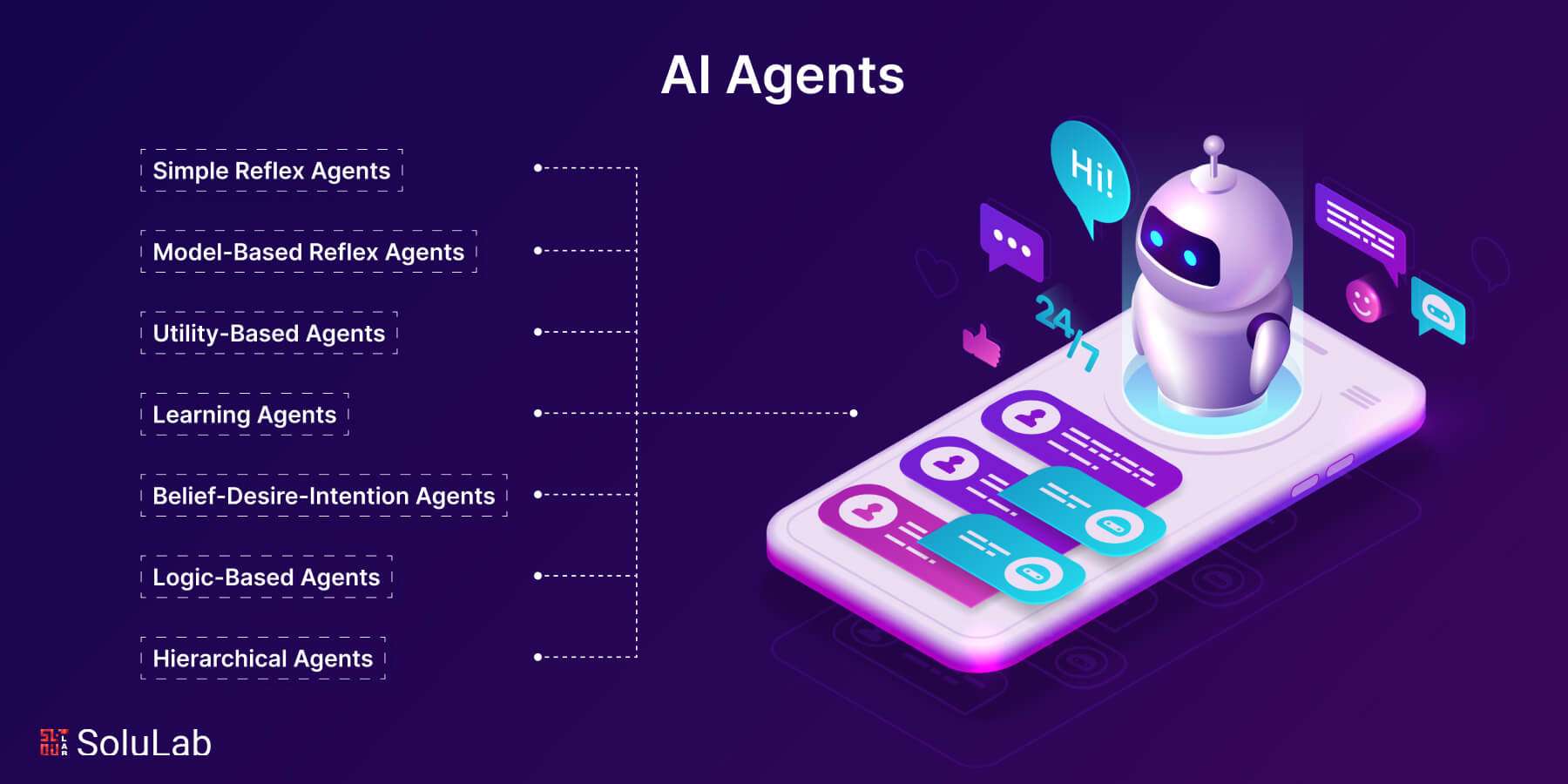Intelligent Agent in AI: The Backbone of Modern Artificial Intelligence
Estimated reading time: 12 minutes
Key Takeaways
- Intelligent agents are autonomous software entities that perceive, decide, and act without immediate human intervention.
- They are fundamental to modern AI applications, enabling machines to learn, adapt, and make decisions independently.
- Key characteristics include autonomy, reactivity, proactiveness, and learning ability.
- There are various types of intelligent agents, such as simple reflex agents, model-based agents, goal-based agents, utility-based agents, and learning agents.
- Applications span across virtual assistants, autonomous vehicles, recommendation systems, healthcare, and finance.
- While offering numerous benefits like efficiency and adaptability, they also present challenges and ethical considerations.
Table of Contents
- Introduction
- What is an Intelligent Agent?
- Intelligent Agent in AI: An In-Depth Look
- How Do Intelligent Agents Work?
- Types of Intelligent Agents in Artificial Intelligence
- Applications of Intelligent Agents
- Benefits of Using Intelligent Agents
- Challenges and Ethical Considerations
- Future Trends in Intelligent Agents
- Conclusion
- Frequently Asked Questions
Introduction
Artificial Intelligence (AI) is no longer a concept of the future; it’s a driving force transforming industries today. At the heart of this revolution lies an essential concept that powers the ability of machines to perceive, reason, and act autonomously: the intelligent agent.
An intelligent agent in AI is a cornerstone of modern AI applications, driving innovations across fields from healthcare and finance to automation and customer service. These agents serve as the backbone of systems capable of learning, adapting, and making decisions independently, mimicking the very essence of intelligent human behavior.
In this blog, we’ll dive deep into intelligent agents, explaining what they are, how they work, their types, applications, benefits, challenges, and future trends. By the end, you’ll have a comprehensive understanding of how AI intelligent agents are shaping the world around us.
What is an Intelligent Agent?
Definition
At its core, an intelligent agent is a software program or entity that gathers information, makes decisions, and takes action without immediate human intervention. These agents operate autonomously and continuously learn from their experiences, driving efficiency in numerous applications.
A concise definition from TechTarget describes an intelligent agent as “a program that gathers information or performs services without immediate human direction and can learn or adjust its behavior based on experience.” (Source)
Key Characteristics
Intelligent agents possess four fundamental characteristics:
- Autonomy: They function independently, minimizing the need for constant human oversight.
- Reactivity: They perceive and respond to changes in their environment.
- Proactiveness: They take initiative to achieve specific goals.
- Learning Ability: They use data to improve and refine their performance over time.
As outlined by SmythOS, these features distinguish intelligent agents from traditional software systems.
Components of Intelligent Agents
- Sensors (Perception): Used to interpret environmental data (e.g., cameras on autonomous vehicles).
- Actuators (Actions): Mechanisms enabling interaction with the environment (e.g., robotic arms in manufacturing).
- Environment: The context in which the agent operates.
- Agent Program: The decision-making logic governing the agent’s actions.
Single vs. Multi-Agent Systems
- Single-Agent Systems: Operate independently, handling individual tasks.
- Example: A robotic vacuum cleaning a room.
- Multi-Agent Systems: Consist of agents working collaboratively to handle complex objectives.
- Example: Collaborative robots (cobots) in assembly lines.
Intelligent Agent in AI: An In-Depth Look
Role in AI
Intelligent agents are essential to AI, acting as the agents of change in environments requiring decision-making akin to human intelligence. They excel in scenarios demanding adaptability and complexity, such as autonomous navigation or fraud detection. (Source)
Architecture of AI Intelligent Agents
1. Perception Through Sensors
Agents perceive their environment using sensors or data-input mechanisms. For example, a robot in a factory might use cameras and temperature sensors to monitor assembly conditions.
2. Decision-Making Processes
Through planning and reasoning, these agents evaluate situations, make decisions, and predict outcomes. Algorithms, such as neural networks or decision trees, often underpin this process.
– Planning Example: Intelligent agents in logistics plan efficient delivery routes (Source).
3. Learning Mechanisms
Agents leverage machine learning techniques—be it supervised, unsupervised, or reinforcement learning—to adjust to new inputs and scenarios. (Source)
4. Actions Through Actuators
Finally, actuators allow agents to act on their decisions, completing tasks such as product assembly or drone navigation.
Interconnection with Artificial Intelligence
Artificial intelligence and intelligent agents share a symbiotic relationship. Intelligent agents embody AI principles, melding machine learning, natural language processing (NLP), and computer vision to perform tasks intelligently and autonomously. (Source)
How Do Intelligent Agents Work?
1. Perception
Intelligent agents rely on sensors or input data to interpret their environment. For example, chatbots process textual data to understand user inquiries.
2. Reasoning & Decision-Making
Using advanced AI models like decision trees and Bayesian networks, these agents generate potential courses of action. Rule-based reasoning or probabilistic approaches are common techniques. (Source)
3. Learning
Over time, intelligent agents enhance their capabilities through learning. For example, recommendation engines identify user preferences using reinforcement learning techniques (Source).
4. Execution of Actions
Agents implement decisions via actuators or software commands. Consider autonomous drones adjusting their routes in real-time as they deliver goods.
5. Collaboration in Multi-Agent Systems
Multi-agent setups enable communication and teamwork between agents. Scenarios such as autonomous swarms of drones often use these systems (Source). (Source)
Types of Intelligent Agents in Artificial Intelligence
1. Simple Reflex Agents
Description: Respond directly to stimuli without considering prior states.
Example: Security alarms triggered by motion detection.
2. Model-Based Agents
Description: Store and use a model of the environment, enabling more calculated decisions.
Example: Robotic vacuums mapping rooms for efficient cleaning.
3. Goal-Based Agents
Description: Execute actions aimed at achieving predefined goals. (Source)
Example: GPS systems calculating optimal routes (Source).
4. Utility-Based Agents
Description: Employ utility functions for evaluating and choosing between actions.
Example: Algorithms prioritizing investment portfolios for financial returns.
5. Learning Agents
Description: Continuously improve performance based on intelligent feedback loops.
Example: AI recommendation engines optimizing personalized content. (Source)
Applications of Intelligent Agents
1. Virtual Assistants (e.g., Siri, Alexa)
– Natural language processing to interpret commands. (Source)
2. Autonomous Vehicles
– Intelligent agents enable real-time decision-making for navigation and safety. (Source)
3. Recommendation Systems
– Platforms like Netflix and Amazon tailor suggestions through agents learning user preferences.
4. Healthcare
– AI-powered agents assist in diagnostics and treatment planning.
5. Finance
– Fraud detection agents analyze anomalies in transactions. (Source)
Benefits of Using Intelligent Agents
- Autonomy: Reduced human reliance.
- Efficiency: Faster, more precise task execution.
- Adaptability: Adjust to dynamic environments.
- Scalability: Handle workload intensification efficiently.
- Enhanced Decision-Making: Improved outcomes through analytics and predictions (Source). (Source)
Challenges and Ethical Considerations
- Data Privacy Risks: Potential for data misuse.
- Bias in AI: Risks emerging from biased training data.
- Job Displacement: Automation could lead to reduced workforce demand.
- Over-Reliance on Automation: Risk of human skill degradation.
Future Trends in Intelligent Agents
- IoT Integration: Agents managing interconnected devices. (Source)
- Improved NLP: Leading to near-human conversational abilities.
- Autonomous Multi-Agent Systems: Greater collaboration potential (Source).
Conclusion
The evolution of intelligent agents in AI is reshaping industries and heralding new possibilities. By understanding their workings, applications, and implications, we stand better equipped to navigate a future dominated by intelligent automation. (Source)
Stay informed. The age of AI intelligent agents is here to stay.
Frequently Asked Questions
1. What are the main types of intelligent agents in AI?
The main types include simple reflex agents, model-based agents, goal-based agents, utility-based agents, and learning agents.
2. How do intelligent agents differ from traditional software programs?
They possess autonomy, reactivity, proactiveness, and learning abilities, enabling them to function and adapt without constant human oversight.
3. What are some real-world applications of intelligent agents?
Applications include virtual assistants, autonomous vehicles, recommendation systems, healthcare diagnostics, and financial fraud detection.
For further learning, explore these resources:


One Comment
Comments are closed.